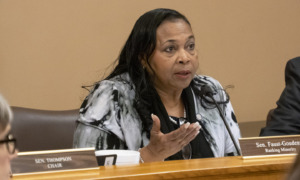Following a year when it was hard to see much that Washington could agree on, in December Congress passed and the president signed into law $500 million in new funding to help state and local governments better deliver child welfare services. Along with new funding, the legislation aims to reduce the incidence of children being removed from their families and put in foster care.

Debra Solomon
The Family First Transition Act (FFTA) and its new funding support what overall has been one of the most positive recent developments in U.S. child welfare policy: the 2018 Family First Prevention Services Act (FFPSA), which reworked delivery of a large portion of federal funding for child welfare. Instead of making federal dollars available to states for services only after children have been removed from their families, the federal government now allows states to access certain funds for trauma-informed, evidence-based interventions and services that can prevent the need for foster care placements.
The Family First legislation promises substantial resources for states, counties and Native American tribes — if you know the right strategies to win them. Here are three examples of what we see as the most promising ways for child welfare agencies to ensure that they can secure their share of this federal funding and improve outcomes for vulnerable children and families:
- Engage deeply with your communities to choose the best interventions for your populations: To access the new funding, states must adopt evidence-based practices approved by the Family First Prevention Services Clearinghouse. Besides a limited number of approved services so far, states also have an opportunity to access additional funding if they can secure Clearinghouse approval for well-documented, evidence-based practices.
We suggest states consider culturally informed strategies for serving specific populations. For example, in developing their FFPSA plan, Washington state’s Department of Children, Youth, and Families conducted in-depth outreach to tribal nations in Washington to identify interventions the tribal nations believe will be most effective in the state’s FFPSA plan. At the request of the tribal nations, Washington also contracted with a qualified Alaska Native/American Indian researcher to conduct the necessary evidentiary review. This kind of effort builds goodwill with populations served and also encourages the federal government to review and approve new, evidence-based models. - Focus on improved data infrastructure and staff capacity: To submit and implement successful FFPSA plans, states need to make sure they have the data infrastructure and staff capacity that allow them to 1) comply with FFPSA requirements and 2) continually evaluate and measure the effectiveness of their interventions. States will need to assess and potentially upgrade their data systems so they can collect, track and analyze client-level data that can show which interventions are delivering the most impact and success. States will also need to develop new data dashboards and self-service tools so program managers can quickly understand how different models are both complying with FFPSA and improving client outcomes.
- Develop responsive and outcomes-oriented contracts with service providers: For states to take advantage of FFPSA, many child welfare agencies will need to expand their contracted services and deepen their collaboration with longstanding nonprofit service providers and community-based organizations. That means moving now on developing responsive and outcomes-oriented contracts now with robust performance measures included and also ensuring culturally competent providers who can meet the needs of diverse groups of clients. Departments will also need to build processes that allow for continuous improvement, as well as the research to see which contractors are achieving outsize results and raise up those examples of successful services to improve outcomes for more families and communities.
Since Family First was first enacted by Congress in February 2018, states have begun the important work to remake their systems and make a real, positive difference in the lives of children surviving abuse and neglect. Now with the added tools and funding available through FFTA, if developed well, these new systems will help thousands of children stay with birth parents and siblings through interventions and supports that address the root issues that families face.
Debra Solomon is director of client services in the San Francisco office of Third Sector, a 501(c)3 consulting firm that uses public funding and data as levers to impact how governments, providers and their partners work with and improve the lives of the people they serve. Founded in 2011, Third Sector has worked with more than 40 communities to deploy more than $806 million of government resources towards outcomes that drive systematic improvements in services that advance people’s lives.





























